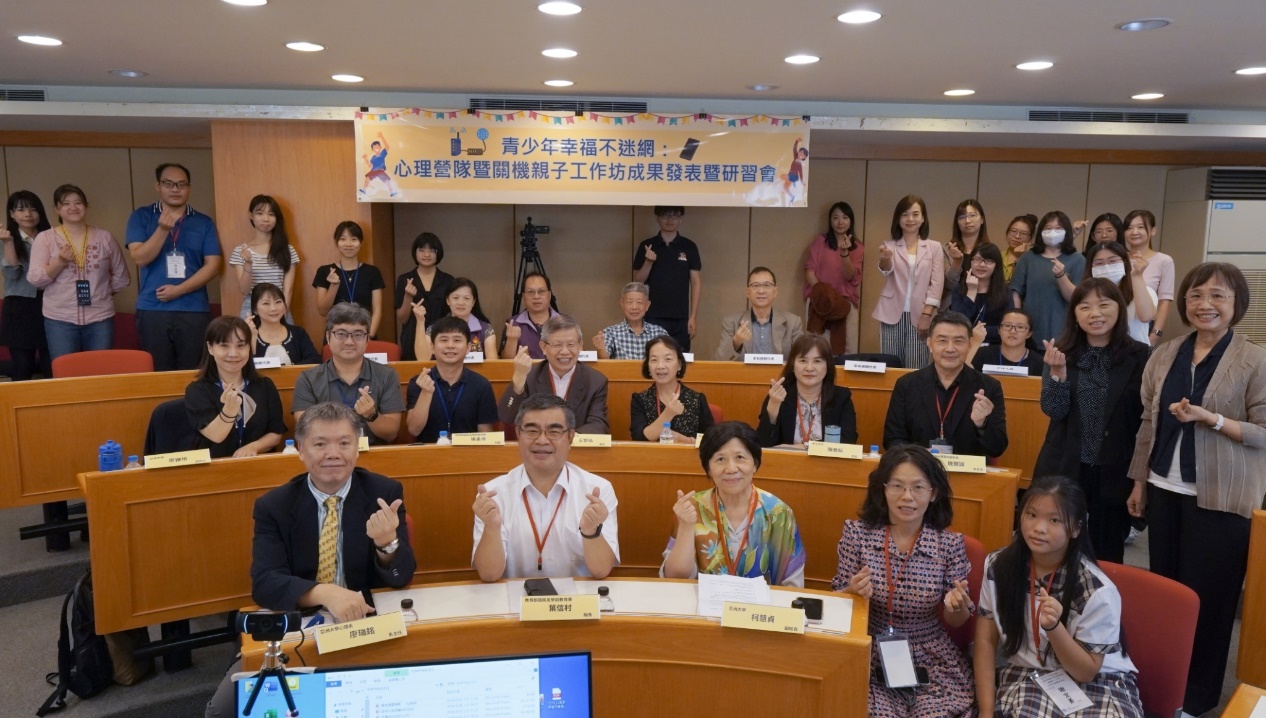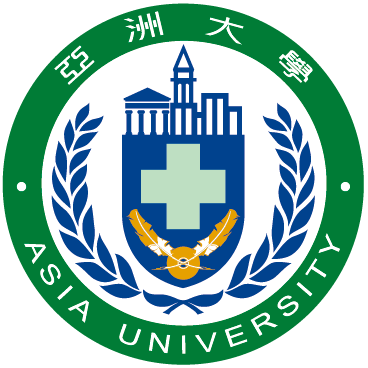Editor: Sheng-Cheng Shih
On October 18th, Asia University’s Anti-Internet Addiction USR Program, led by Vice President Ko, successfully held a hybrid in-person and online psychology camp and parent-child workshop results presentation and symposium. The event attracted participants from across the nation, including presidents of parents' associations from middle and high schools, high school counselors, and teachers.

Caption: Dr. Chen Hsiang-Yun (left), Principal of Changhua Girls' Senior High School, and Mr. Shih Sheng-Cheng (right), Lecturer in the Department of Interior Design.
Associate Professor Shih Sheng-Cheng, Director of the Department of Interior Design at Asia University, was invited to share the results of his involvement in the Internet addiction program. His talk, titled “Enhancing Adolescents' Creative Advantage and Self-Esteem through Design Thinking Solutions,” delved into how the five steps of design thinking—empathy, defining, ideating, prototyping, and testing—can boost adolescents' creativity and self-esteem. Professor Shih explained how design thinking not only inspires teenagers to discover and solve problems but also, through repeated trial and error, strengthens their sense of self-efficacy, which is especially important for young people facing the challenges of the digital age and the risks of addiction. Citing research from David Kelley, founder of Stanford University's Design School, Professor Shih emphasized that design thinking helps adolescents unleash creativity and gain confidence in navigating a rapidly changing world.

Caption: Associate Professor Shih Sheng-Cheng, Director of the Department of Interior Design, sharing his experience in the anti-Internet addiction course.
Additionally, Professor Shih shared detailed examples of two-hour course activities within the program, such as the “Marshmallow Tower Challenge” and the “Popsicle Stick Bridge Challenge,” which utilized game-based learning to engage teenagers in team collaboration and problem-solving. These activities demonstrated the real-world applications of design thinking and effectively improved the participants' creativity and self-esteem.
Following the talk, attendees engaged in lively discussions, exchanging their insights and takeaways. Several high school counselors noted that the presentation offered a fresh perspective on guiding adolescents to cope with Internet addiction, especially in fostering creativity and boosting self-esteem. Asia University's Anti-Internet Addiction USR Program expressed its commitment to continuing such lectures and activities in the future, promoting innovative educational concepts to further support the holistic development of adolescents.

Caption: Group photo from the workshop results presentation and symposium.



